
Radiator and Coolant Flow System, Water Pump Inspection, and Replacement
The cooling system in Cummins ISM, ISMe, and QSM11 engines is essential for maintaining optimal engine operating temperature, preventing overheating, and ensuring engine longevity. The system regulates heat buildup from combustion and friction by circulating coolant through the engine block, cylinder head, radiator, and water pump.
Proper maintenance of the radiator, coolant flow system, and water pump is critical for preventing engine damage and maximizing efficiency. A malfunctioning cooling system can lead to overheating, loss of power, excessive emissions, and potential engine failure.
This guide provides a detailed step-by-step process for understanding coolant flow, inspecting and maintaining the radiator, testing and replacing the water pump, and troubleshooting cooling system issues.
For specific coolant capacities, thermostat settings, torque values, and service intervals, consult an OEM service manual or contact Diesel Pro Power for expert assistance.
Parts Catalog for ISM Cummins Marine and Industrial Engines
Fresh Water Pump & Related Components for Cummins ISM engine
Parts Catalog for QSM Cummins Marine and Industrial Engines
Fresh Water Pump & Related Components for Cummins QSM11 engine
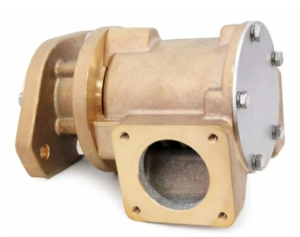
Marine Raw Watrer Pump & Related Components for Cummins QSM11 engine
Cooling System Overview for Cummins ISM, ISMe, and QSM11

The cooling system consists of several components working together to remove excess heat and maintain proper engine temperatures.
Key Components of the Cooling System
✔ Radiator – Transfers heat from coolant to the air for cooling.
✔ Water Pump – Circulates coolant throughout the engine.
✔ Thermostat – Regulates coolant temperature by controlling flow.
✔ Coolant Reservoir (Expansion Tank) – Stores excess coolant and manages pressure fluctuations.
✔ Cooling Hoses – Transport coolant between components.
✔ Cooling Fan – Enhances airflow through the radiator for better heat dissipation.
✔ Temperature Sensors – Monitor coolant temperature and relay data to the ECM.
Radiator and Coolant Flow System
The radiator is responsible for dissipating heat from the coolant before it returns to the engine. The coolant flow system ensures that coolant moves efficiently through the radiator, engine block, and hoses, keeping temperatures within operating limits.
How the Coolant Flow System Works
- Coolant Absorbs Engine Heat
- The water pump draws coolant from the radiator and pushes it through the engine block and cylinder head, absorbing heat from combustion.
- The water pump draws coolant from the radiator and pushes it through the engine block and cylinder head, absorbing heat from combustion.
- Heated Coolant Moves to the Radiator
- Once heated, the coolant exits the engine and enters the radiator, where it cools down.
- Once heated, the coolant exits the engine and enters the radiator, where it cools down.
- Heat is Dissipated from the Radiator
- The radiator dissipates heat as air passes through the fins.
- The radiator dissipates heat as air passes through the fins.
- Coolant Circulates Back to the Engine
- The thermostat regulates coolant flow by opening or closing depending on temperature.
- The cooled coolant returns to the engine, repeating the cycle.
Common Radiator and Coolant Flow Issues
A malfunctioning radiator or coolant flow system can cause overheating, coolant leaks, and poor cooling efficiency.
| Symptom | Possible Cause | Recommended Action |
| Engine Overheating | Low coolant, radiator blockage, failing thermostat | Check coolant level, inspect radiator |
| Coolant Leaks | Cracked radiator, loose hose clamps | Pressure test the cooling system |
| Fluctuating Temperature Gauge | Faulty thermostat, low coolant pressure | Test and replace thermostat |
| White Smoke from Exhaust | Coolant leaking into combustion chamber | Inspect head gasket, coolant passages |
Step 1: Inspecting the Radiator and Coolant Flow System
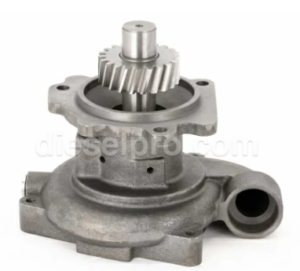
- Check Coolant Levels in the Radiator and Reservoir
- The coolant should be at the max fill line when the engine is cold.
- If the coolant is low, check for leaks and refill with Cummins-approved coolant.
- Inspect Radiator Fins for Clogs or Damage
- Dirty or bent fins can reduce cooling efficiency.
- Use compressed air or a soft brush to clean debris from the fins.
- Check Radiator Hoses for Leaks or Wear
- Look for cracks, bulges, or soft spots in the hoses.
- Replace any worn or leaking hoses to prevent coolant loss.
- Perform a Coolant Pressure Test
- Attach a coolant pressure tester to the radiator cap.
- Pressurize the system to OEM-specified psi and check for leaks.
Step 2: Flushing and Refilling the Coolant System
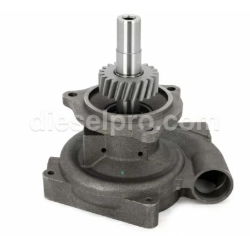
- Drain Old Coolant Completely
- Open the radiator drain plug and engine block drain to remove all coolant.
- Dispose of used coolant according to environmental regulations.
- Flush the Cooling System
- Use a coolant flush solution or distilled water to remove deposits.
- Run the engine for 10-15 minutes, then drain the flush solution.
- Refill the System with Fresh Coolant
- Use OEM-recommended coolant with a 50/50 mix of antifreeze and distilled water.
- Fill the radiator and expansion tank to the max fill line.
- Bleed Air from the Cooling System
- Start the engine and let it reach operating temperature with the radiator cap off.
- Add coolant as necessary to remove trapped air bubbles.
Water Pump Inspection and Replacement
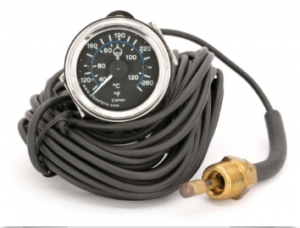
The water pump is responsible for circulating coolant throughout the engine. A failing water pump can lead to coolant leaks, overheating, and poor cooling efficiency.
Common Signs of Water Pump Failure
✔ Coolant leaks around the water pump housing
✔ Overheating due to insufficient coolant circulation
✔ Grinding noise from the water pump bearings
✔ Steam from the engine compartment
✔ Low coolant pressure warning
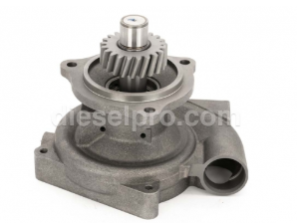
Step 1: Inspecting the Water Pump
- Check for Coolant Leaks Around the Water Pump
- Look for leaking coolant near the pump gasket.
- Look for leaking coolant near the pump gasket.
- Spin the Water Pump Pulley
- If the pulley is wobbly or makes noise, the bearings may be failing.
- If the pulley is wobbly or makes noise, the bearings may be failing.
- Inspect the Pump Impeller for Damage
- Remove the pump and check if the impeller is corroded or broken.
- Remove the pump and check if the impeller is corroded or broken.
Step 2: Removing the Water Pump
- Drain the Coolant System
- Open the drain plug and allow coolant to drain.
- Open the drain plug and allow coolant to drain.
- Remove the Water Pump Belt
- Loosen the belt tensioner and remove the serpentine belt.
- Loosen the belt tensioner and remove the serpentine belt.
- Unbolt and Remove the Water Pump
- Loosen all mounting bolts in sequence to avoid stress on the housing.
- Carefully pull the pump away from the engine.
Step 3: Installing a New Water Pump
- Clean the Water Pump Mounting Surface
- Remove old gasket residue using a plastic scraper.
- Remove old gasket residue using a plastic scraper.
- Install a New Water Pump Gasket
- Apply a thin layer of coolant-resistant sealant to ensure a proper seal.
- Apply a thin layer of coolant-resistant sealant to ensure a proper seal.
- Secure the New Water Pump in Place
- Torque the mounting bolts to OEM specifications in a crisscross pattern.
- Torque the mounting bolts to OEM specifications in a crisscross pattern.
- Reconnect the Cooling System Components
- Reinstall hoses and tighten clamps securely.
- Reinstall hoses and tighten clamps securely.
- Refill the Cooling System with Fresh Coolant
- Add coolant to the radiator and reservoir to the recommended level.
- Add coolant to the radiator and reservoir to the recommended level.
- Start the Engine and Check for Leaks
- Run the engine and monitor temperature gauges for normal operation.
- Run the engine and monitor temperature gauges for normal operation.
Final Notes on Cooling System Maintenance for Cummins ISM, ISMe, and QSM11
✔ Check coolant levels regularly to prevent overheating.
✔ Inspect the water pump for leaks and replace when necessary.
✔ Flush and replace coolant every 300,000 miles or according to OEM recommendations.
✔ Ensure radiator fins and cooling passages remain clean for maximum heat dissipation.
✔ Consult an OEM manual or Diesel Pro Power for precise service specifications.
By following these detailed procedures, you ensure optimal engine cooling, reduced wear, and extended service life for Cummins ISM, ISMe, and QSM11 engines.
Parts Catalog for ISM Cummins Marine and Industrial Engines
Fresh Water Pump & Related Components for Cummins ISM engine
Parts Catalog for QSM Cummins Marine and Industrial Engines
Fresh Water Pump & Related Components for Cummins QSM11 engine

Marine Raw Watrer Pump & Related Components for Cummins QSM11 engine



 Free US Calls: 1-888-433-4735
Free US Calls: 1-888-433-4735 International: 305-545-5588
International: 305-545-5588